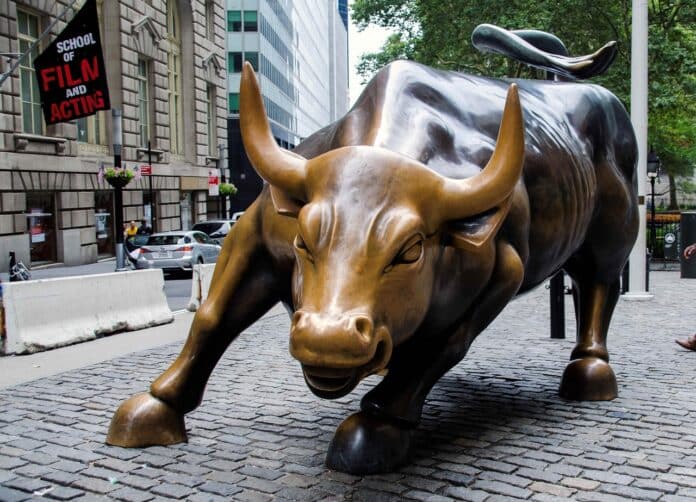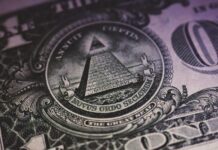Yesterday’s decision by the Fed was in line with expectations. For the third time in a row, the institution left interest rates at the same level (5.25 – 5.5 percent). According to updated forecasts, the US central bank now expects three rate cuts next year instead of two. At the same time, the economy is expected to have a soft landing. Due to the drop in inflation, the probability that the Fed will lower interest rates before the middle of next year has increased. As a result, the dollar lost value, the yields on US bonds fell, and stock indices gained.
Yesterday’s decision was unanimous. Although the Federal Reserve’s statement did not rule out another increase, such a scenario is rather unrealistic at this point. This statement was only made to leave the Fed the possibility to act in case the inflation situation gets a bit more complicated. However, some phrases have been toned down. Powell’s comments suggested that the Fed no longer considers this scenario likely to be realized.
In the press conference, the Fed chairman pointed out that the key interest rate is very close to or has already reached its peak, as also confirmed by the dot plot. The question now arises as to how long the Fed will remain at the peak of interest rates. For the first time, Powell confirmed that the Fed has started discussing upcoming rate cuts. Still, we heard again that it’s too early to declare victory over inflation. The market essentially ignored this already familiar statement and focused on the “dovish” turn in communication.
The Fed sees clear progress in the disinflation process and also notes a decrease in service prices. Positive data readings from yesterday (PPI) and Tuesday (CPI) were emphasized, and it was acknowledged that they led some meeting participants to revise their forecasts. Powell also provided estimates of the PCE and PCE core indicators – the bank’s preferred measure of inflation. They were 2.6 percent and 3.1 percent respectively for the core measure.
Returning to the dot plot, a change occurred in how much the Fed plans to cut the cost of money in 2024. Now the median expectations of FOMC representatives indicate a reduction of 75 basis points (to 4.6 percent), in September the consensus suggested two cuts to 5.1 percent (then it was assumed that we would end the year higher at 5.6 percent). There is a change of 50 basis points and easing in monetary policy here.
The Fed has changed its forecasts for inflation and economic growth. This year, real GDP is set to be 2.6 percent (previously it was 2.1 percent), and in 2024, the economy is to grow at an average annual rate of 1.4 percent (previously 1.5 percent). The PCE indicator is expected to be 2.8 percent (in September it was forecasted at 3.3 percent). The estimates for next year indicate 2.4 percent, not 2.5 percent as suggested by September’s projections. The core measure also decreased from 3.7 percent to 3.2 percent in 2023 and from 2.6 percent to 2.4 percent next year.
The market reaction was clear. It was obvious that investors had no problem interpreting the data and Powell’s words. The Fed chairman made a certain turn in monetary policy, which had already been suggested by the earlier statements of individual bank representatives. The dollar weakened, and the main currency pair “wandered” to the 1.09 mark, thus breaking the potential neckline formation of the oRGR. The zloty gained, and the EUR/PLN rate fell to 4.30 and USD/PLN to 3.95. The weakness of the USD generally strengthens gold, and so it was this time. An ounce currently costs around 2030 USD, though yesterday the price approached the 2040 USD level. There was a clear movement in bonds (decline in yields), and Wall Street greeted the information with great optimism, resulting in significant index increases of around 1.4 percent. The Dow Jones set new historical highs.
Łukasz Zembik, Oanda TMS Brokers

















